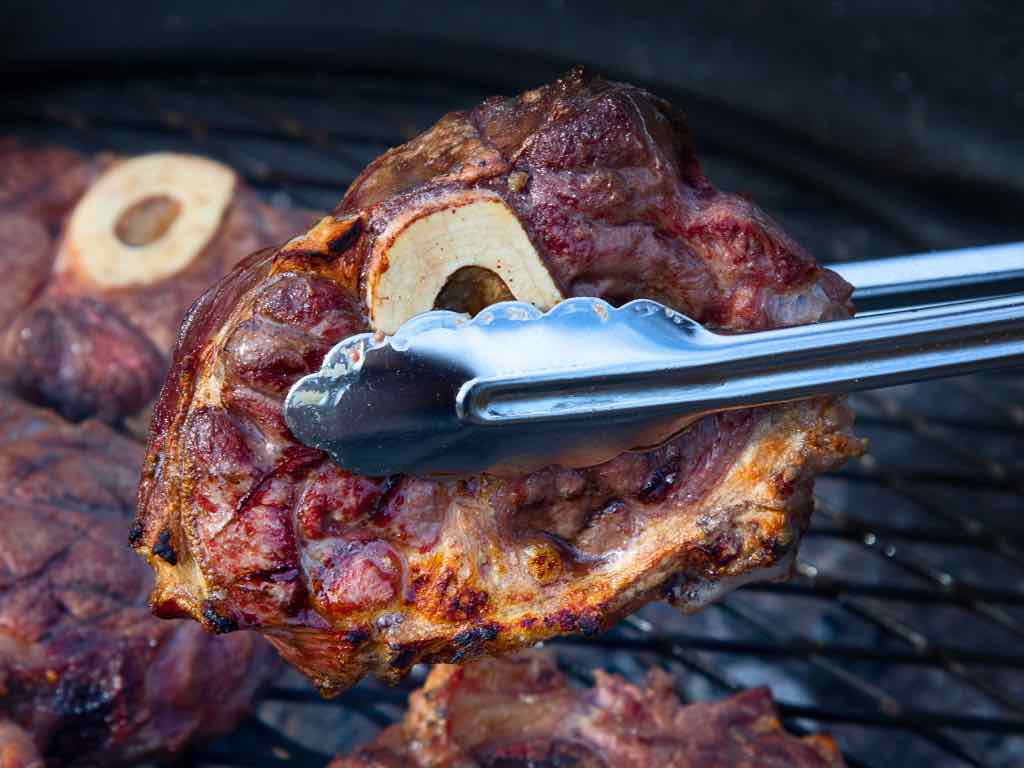
Mastering the Art of How to Cook Beef Shank: A Flavorful Guide
|
|
Time to read 6 min
Welcome to One Stop Halal!
Written by: Najma A.
|
|
Time to read 6 min
Cooking beef shank might seem daunting, but with the proper techniques and patience, you can transform this tough cut of meat into a melt-in-your-mouth delicacy. Whether you're aiming to create a hearty stew or a succulent roast, beef shank has the potential to shine as the star of your meal. In this comprehensive guide, we'll delve into the art of how to cook beef shank, exploring various methods that will leave your taste buds craving more.
Cooking beef shank may seem intimidating, but with some knowledge, you can master this flavorful cut. Beef shank, taken from the lower leg of the cow, is known for its tough fibers and rich connective tissues. To make it tender and delicious, slow-cooking methods are essential.
Start by selecting well-marbled shanks with a deep red color. Thaw frozen shanks in the refrigerator and trim excess fat, leaving some for flavor. Season generously with salt, pepper, and your favorite herbs, allowing the meat to sit at room temperature for optimal flavor absorption.
There are three primary methods for how to cook beef shank:
After cooking, let the beef shank rest briefly before serving. Pair it with side dishes like mashed potatoes or crusty bread to soak the delicious juices. Whether you choose braising, roasting, or stewing, mastering beef shank opens the door to a world of delectable flavors and textures.
Selecting the perfect beef shank is a crucial first step in creating a delicious and satisfying dish. When shopping for the beef shank, remember that this cut comes from the lower leg of the cow and is known for its tough fibers and connective tissues. However, with the proper selection, you can ensure a more enjoyable cooking and dining experience.
Look for a beef shank that is cut evenly and has a substantial size. A larger piece will provide more meat for your dish, and uniformity in size ensures even cooking.
Opt for a beef shank with a deep red color, as it indicates freshness and higher quality. Additionally, marbling - small streaks of fat throughout the meat - is desirable. Marbling means a well-aged and flavorful cut, adding richness to your dish.
While bone-in and boneless beef shanks can be used in various recipes, many chefs prefer bone-in shanks for the extra flavor the bone imparts during cooking. The bone also helps retain moisture and ensures more succulent meat.
Choose a beef shank that is fresh and well-maintained. Check the expiration date and inspect the packaging for any signs of damage or leaks. If buying from a butcher, inquire about the age of the meat to ensure it has been adequately aged for tenderness and flavor.
Whenever possible, select beef shank that is certified by reputable organizations, as this ensures specific standards are met regarding animal welfare, quality, and safety. Additionally, consider choosing locally sourced or sustainably raised beef shank for a more ethical and environmentally friendly option.
While some fat is desirable for flavor and moisture, excessive fat can lead to an overly greasy dish. Choose beef shank with balanced fat and lean meat to achieve the best results.
Don't hesitate to ask your butcher for assistance selecting the perfect beef shank. They can provide valuable insights, recommend cooking methods, and even help you choose the right size and cut for your specific recipe.
At One Stop Halal, you will find assorted collections of butcher cuts for various kinds of animals. All our products are locally harvested in the USA, ethically raised, and hand-slaughtered the old-fashioned way: by a man with a knife.
When it comes to how to cook beef shank, employing suitable methods is essential to achieve tender, flavorful results. This challenging and connective tissue-rich cut demands slow and gentle cooking techniques to unlock its full potential. Here are three effective methods for cooking beef shank:
Braising is a time-tested method that transforms tough cuts like beef shank into succulent and flavorful masterpieces. Follow these steps for a delectable outcome:
Roasting beef shank creates a delightful contrast between a caramelized outer layer and a tender interior. Here's how to do it:
Stewing is an excellent choice for creating hearty and comforting dishes with beef shank. Here's how to stew to perfection:
In conclusion, these three cooking methods – braising, roasting, and stewing – are ideal for making beef shank tender, flavorful, and irresistible. Depending on your preferences and the dish you aim to create, you can choose the method that best suits your culinary vision. Regardless of your choice, the key is to be patient and allow the slow cooking process to work its magic on this hearty cut of meat.
Cooking beef shank may require time and patience, but the resulting flavors and textures are well worth the effort. Whether you braise, roast, or stew this versatile cut, you'll be rewarded with a mouthwatering dish that will impress family and friends. So, don your apron, gather your ingredients, and embark on a culinary adventure celebrating the art of transforming rigid beef shank into a delectable masterpiece.

© 2025 One Stop Halal, Inc.